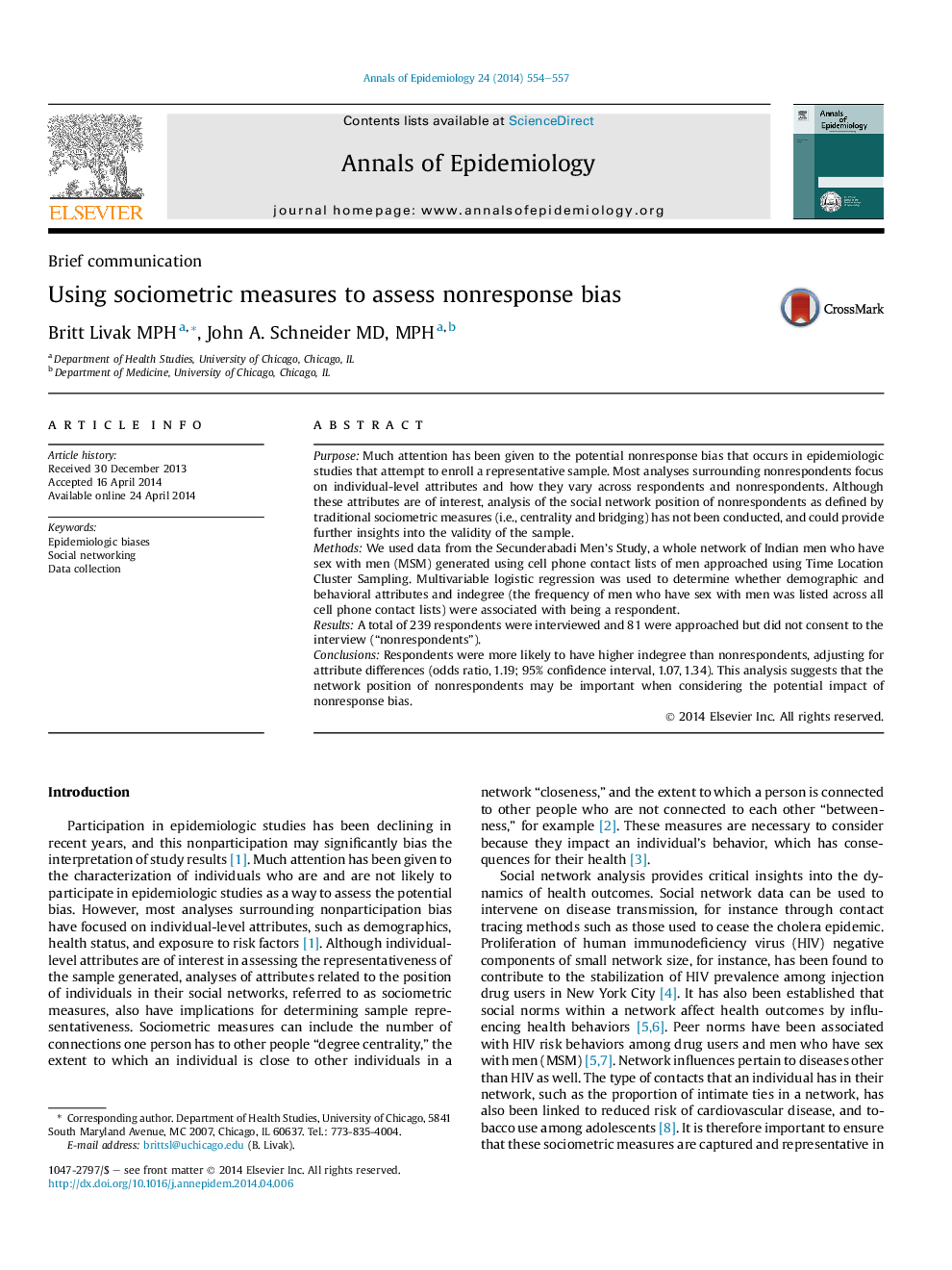| Article ID | Journal | Published Year | Pages | File Type |
|---|---|---|---|---|
| 3443936 | Annals of Epidemiology | 2014 | 4 Pages |
PurposeMuch attention has been given to the potential nonresponse bias that occurs in epidemiologic studies that attempt to enroll a representative sample. Most analyses surrounding nonrespondents focus on individual-level attributes and how they vary across respondents and nonrespondents. Although these attributes are of interest, analysis of the social network position of nonrespondents as defined by traditional sociometric measures (i.e., centrality and bridging) has not been conducted, and could provide further insights into the validity of the sample.MethodsWe used data from the Secunderabadi Men's Study, a whole network of Indian men who have sex with men (MSM) generated using cell phone contact lists of men approached using Time Location Cluster Sampling. Multivariable logistic regression was used to determine whether demographic and behavioral attributes and indegree (the frequency of men who have sex with men was listed across all cell phone contact lists) were associated with being a respondent.ResultsA total of 239 respondents were interviewed and 81 were approached but did not consent to the interview (“nonrespondents”).ConclusionsRespondents were more likely to have higher indegree than nonrespondents, adjusting for attribute differences (odds ratio, 1.19; 95% confidence interval, 1.07, 1.34). This analysis suggests that the network position of nonrespondents may be important when considering the potential impact of nonresponse bias.
